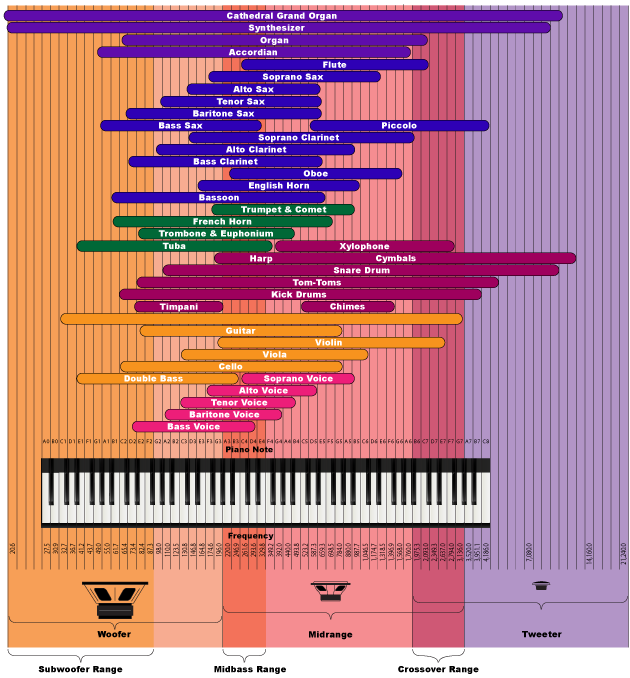Why Subwoofer Extension is Important
When we talk about subwoofers, we worry about two main performance metrics – Output and Extension. Output is simply volume. How loud the subwoofer can play. In a room, you need the subwoofer to have enough output to fill the room with bass. Extension, on the other hand, isn’t about loudness. It is about how low the subwoofer can play. But how important is extension for a subwoofer? More to the point, why is it important? Let’s begin.
Do You Want All the Sounds or Not?
First of all, subwoofers are designed to play the lowest bass. This is stuff that is usually impossible for your speakers to play. But when you are shopping for a subwoofer, you’ll notice they have different extension ratings and it can be confusing. How much do you actually need? Well, the range of human hearing is from 20Hz to 20kHz. Most speakers of reasonable quality can play all the notes from 80Hz to 20kHz. That means that your subwoofer only needs to pick up the 20Hz to 80Hz frequencies to fill in the gap.
But not all content really goes all the way down to 20Hz. Most instruments barely dip into 30Hz at their lowest notes. If you are only listening to music, do you really need a subwoofer with extension all the way down to 20Hz? Maybe. Organ notes can actually go lower than 20Hz. Many instruments get close to 20Hz. Check out the graphic below taken from here.

Pianos go to 27Hz, and organs and synthesizers go much lower. While you could get away with a subwoofer with extension down to 30-35Hz and still get most music, you’d be missing out on some important low notes in some of your music. If you want to hear all the notes, you’ll need a subwoofer that can get at least down to the mid 20’s. And if you are going that low, you might as well get to 20Hz.
Recreating the Theater at Home
If the point of your system is to recreate what you experience in a movie theater, 20Hz isn’t going to be enough for you. Subwoofers in theaters extend well past that important 20Hz mark into the infrasonic area. These are notes that are too low for your ears to actually hear. So why play them? Because you can feel them. When you are in a theater and you can feel the bass in your stomach? Some of that is from notes you can hear, but much of it is from infrasonic sounds. If you want to get that truly cinematic experience in your home, you’re going to want a subwoofer with extension past 20Hz and into the high teens.
Extension and Immersion
Yes, a subwoofer with extension into the high teens will rumble your stomach. But it will also rumble a whole lot of other things. Most notably, your couch. While you can recreate this experience with bass shakers, nothing beats the real thing. It feels natural, it seems lifelike, and when it is happening based on what you are seeing on the screen, it makes the movies seem more real.
If you are a fan of horror movies, you can’t skip the deep bass. Horror movie directors have discovered that they can create quite a bit of tension by playing extremely low notes that you can feel but not hear. When your subwoofer extension is low enough, this conveys a feeling of unease that can perfectly set the stage for the next big scare.
A subwoofer with good extension provides all the sounds that we would experience in real life. A truck drives by, a plane flies overhead, a fog horn…all these extremely low notes are there in real life. If your system can’t recreate them accurately, then your immersion in the movie, music, or content will be broken.
Conclusion
A subwoofer is more than the sum of its output and extension. There are other things to consider. But before a subwoofer makes your shortlist of potential candidates to buy, it needs to have enough output for your room, and enough extension for the content you enjoy. While we’d always suggest a subwoofer that has at least 20Hz extension, there are reasons you might not need that. As long as you’ve correctly identified your needs, you can shop with confidence. And remember, the next purchase after buying your first subwoofer, is your second.


